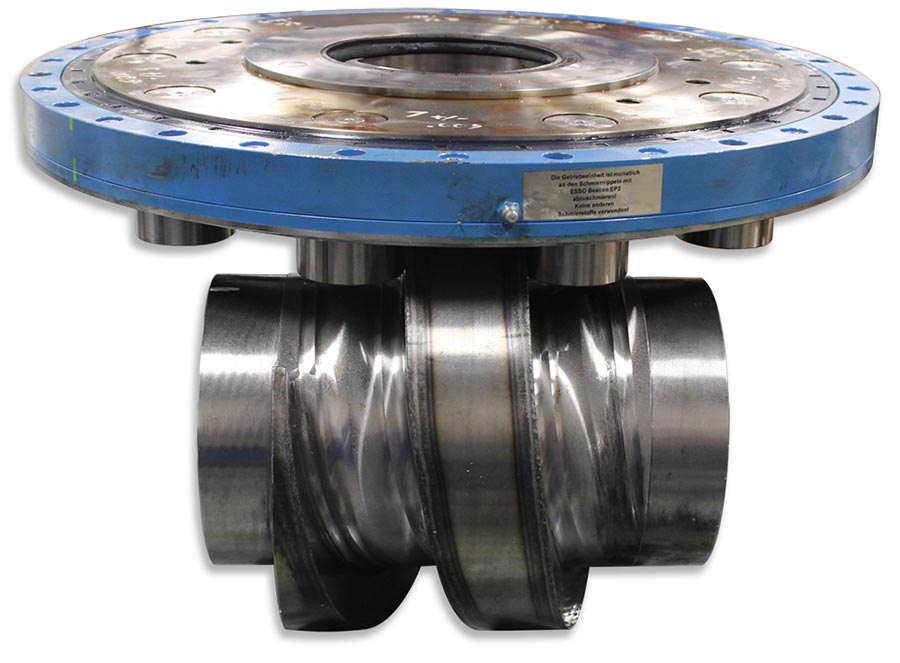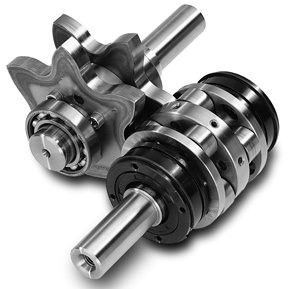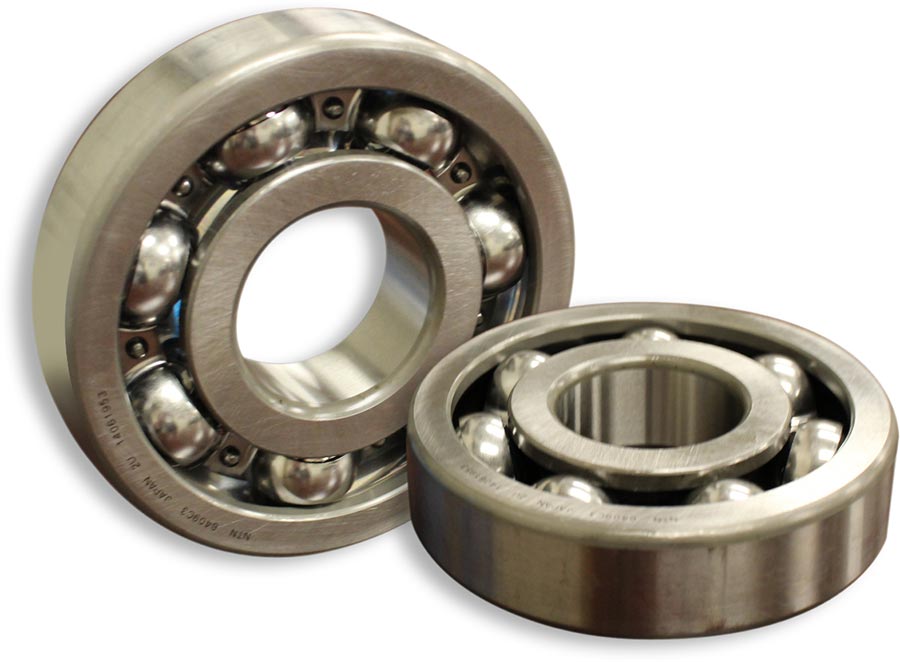There are few components that go into the construction of a rotary index table. What sets companies apart from one another is the ability to engineer and design a robust rotary indexer to last many years and capabilities to customize to specific environments or application. A rotary index table, when implemented, is the heart of the automated process, so it is imperative that it has a long life.
 All rotary index tables use cam followers. Cam followers are the components that take the brunt of the load while rotating and during emergency stop conditions. The two main types of cam followers used for rotary indexers are needle bearing and journal bearing. Needle bearing type cam followers are better suited for indexing applications that are continuously running and index at hundreds of indexes per minute. Journal bearing cam followers are better suited for all other rotary index table applications due to their increased strength over needle bearing cam followers of similar diameters. The increased strength comes from the wall thickness of the cam roller and the shaft diameter. The strength is typically 50% greater in the journal bearing type of the needle bearings style. On most rotary index table applications, a case-hardened roller and shaft is important. There are some custom rotary index table applications that could require a different material other than steel which will prohibit it from being hardened. In such cases the loads are not high, and the automated process cannot allow for steel components.
All rotary index tables use cam followers. Cam followers are the components that take the brunt of the load while rotating and during emergency stop conditions. The two main types of cam followers used for rotary indexers are needle bearing and journal bearing. Needle bearing type cam followers are better suited for indexing applications that are continuously running and index at hundreds of indexes per minute. Journal bearing cam followers are better suited for all other rotary index table applications due to their increased strength over needle bearing cam followers of similar diameters. The increased strength comes from the wall thickness of the cam roller and the shaft diameter. The strength is typically 50% greater in the journal bearing type of the needle bearings style. On most rotary index table applications, a case-hardened roller and shaft is important. There are some custom rotary index table applications that could require a different material other than steel which will prohibit it from being hardened. In such cases the loads are not high, and the automated process cannot allow for steel components.
 The two main types of cams used in rotary indexers are barrel and globoidal. Globoidal cams are mostly used for smaller index tables. The use of globoidal cams can compromise load capacity and accuracy. Globoidal cams are better suited for extremely high speeds (several hundred RPM) and continuous running cam applications used in timing other apparatuses that don’t require high accuracy. In a globoidal cam indexer the cam followers are in a star wheel configuration and the overall pitch diameter of the cam followers is less, size for size in comparison to the barrel cam type indexer. The cams Motion Index Drives manufactures are ALWAYS hardened (either induction or flame hardened), and finish ground to ensure a long life without wear, but also to provide superior indexing accuracy. The barrel cam has higher accuracy and strength compared to the globoidal type cam of a similar size. The cam followers on the barrel cam type are directly mounted underneath the output dial and the pitch diameter is larger.
The two main types of cams used in rotary indexers are barrel and globoidal. Globoidal cams are mostly used for smaller index tables. The use of globoidal cams can compromise load capacity and accuracy. Globoidal cams are better suited for extremely high speeds (several hundred RPM) and continuous running cam applications used in timing other apparatuses that don’t require high accuracy. In a globoidal cam indexer the cam followers are in a star wheel configuration and the overall pitch diameter of the cam followers is less, size for size in comparison to the barrel cam type indexer. The cams Motion Index Drives manufactures are ALWAYS hardened (either induction or flame hardened), and finish ground to ensure a long life without wear, but also to provide superior indexing accuracy. The barrel cam has higher accuracy and strength compared to the globoidal type cam of a similar size. The cam followers on the barrel cam type are directly mounted underneath the output dial and the pitch diameter is larger.
 External reducers, coupled with a motor (AC, DC or Servo), allow flexibility to pick the exact ratio required to meet a customer’s speed and torque requirements of the application. The external reducer also allows the freedom to then pick a motor suited to match the speed requirement, so the motor never has to be oversized due to not enough reduction, saving on energy consumption. The external reducer also allows for smaller size indexer housings, reducing footprint, while the internal housing of the indexer is optimized to hold the largest internal components between the cam and cam followers, and not wasting space on holding the gearing.
External reducers, coupled with a motor (AC, DC or Servo), allow flexibility to pick the exact ratio required to meet a customer’s speed and torque requirements of the application. The external reducer also allows the freedom to then pick a motor suited to match the speed requirement, so the motor never has to be oversized due to not enough reduction, saving on energy consumption. The external reducer also allows for smaller size indexer housings, reducing footprint, while the internal housing of the indexer is optimized to hold the largest internal components between the cam and cam followers, and not wasting space on holding the gearing.
 A low friction four-point contact bearing system for the rotating top dial can handle high axial loads while also supporting tilting moments, due to offset loading. Some manufacturers use very thin axial and radial bearings. Their bearings are very thin, 3-5mm in thickness, and the preload to the bearing is only done utilizing the center flange of the index drive. This limits the ability of supporting tilting moments as well as greatly reducing the rigidity of the top dial at the outside diameter, as gravity is what is preloading their outer top dial bearing.
A low friction four-point contact bearing system for the rotating top dial can handle high axial loads while also supporting tilting moments, due to offset loading. Some manufacturers use very thin axial and radial bearings. Their bearings are very thin, 3-5mm in thickness, and the preload to the bearing is only done utilizing the center flange of the index drive. This limits the ability of supporting tilting moments as well as greatly reducing the rigidity of the top dial at the outside diameter, as gravity is what is preloading their outer top dial bearing.
Ben Talan
President Motion Index Drives
p. 888.328.9853
www.motionindexdrives.com
info@mid.us.com

